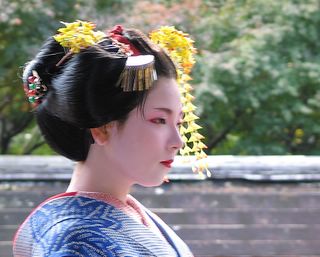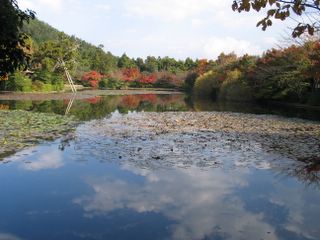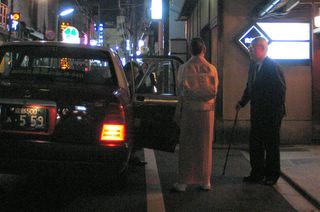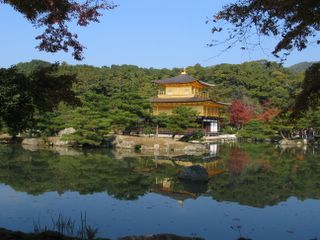
Kinkakuji means the
temple of the Golden Pavilion. Constructed in Kyoto's northern hills in 1398 by Yoshimitsu, the third Ashikaga shogun, it was once part of a much larger villa complex. When he died it became a Zen temple in accordance with his will. Sadly, the original temple burned in 1950 when a deranged Buddhist monk set it ablaze. A good dramatization of the arson can be found in the book The Temple of the Golden Pavilion by Yukio Mishima

Each floor of the Kinkakuji is a different style. The first floor, called
The Chamber of Dharma Waters is inspired by the Heian mansions of the 11th century and often described as the Shinden style. It is merely a large room surrounded by a verandah. The verandah sits beneath the more massive second story and is separated from the interior by reticulated shutters called Shitomido. The Shitomido reach only halfway to the ceiling, allowing ample light and air in the interior.

The second story, called The Tower of Sound Waves, is the Samurai house style. Intended as a Buddha hall, it encloses an icon of the Bodhisattva Kannon.
The third story is built in the Zen style, with cusped windows and ornamentation. Appropriately, it houses an Amida triad and twenty-five Bodhisattvas. A Chinese phoenix crowns the eaves.

Kinkakuji serves as an important model for later works, particularly the Silver Pavilion, or Ginkakuji, constructed between 1384-1390 by another member of the Ashikaga family, Yoshimasa, who was the 8th shogun. Yoshimasa developed upon the styles employed at Kinkakuji and borrowed the names of its 2nd and 3rd floors for his own work.

Like Ginkakuji, Kinkakuji owes much to the Saihoji temple and moss garden complex of Muso Soseki (1275-1351) built in 1339. Soseki himself is said to have been influenced by the Song dynasty Zen text, The Blue Cliff Record. It is believed that Yoshimasa based his design of Ginkakuji on the Lapis Lazuli Pavilion (Ruriden) of Soseki's complex.
[EDIT: one of these pictures has been published on
corriere.it]


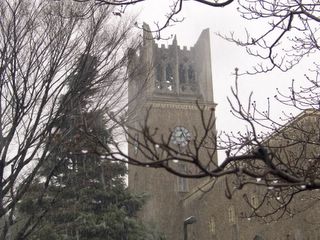
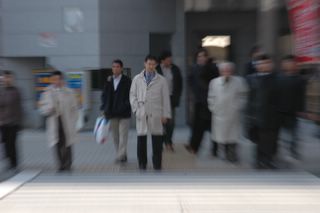





 The word geisha literally means 'arts person' or artisan.
The word geisha literally means 'arts person' or artisan.